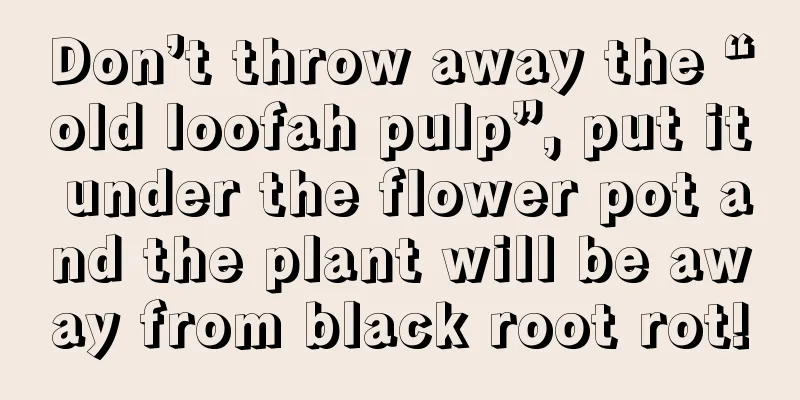Don’t throw away the “old loofah pulp”, put it under the flower pot and the plant will be away from black root rot!

In fact, it is not only because many flower plants grow faster in autumn, but we can even use some things on the roadside to grow flowers, and the effect is quite good. Well, Huahua won’t keep you in suspense and will tell you right away which things are so effective in growing flowers!The first type: loofah pulpThe loofah pulp that Huahua is talking about here is not the one we dig out when we eat it. Because vegetables like loofah gradually stop bearing fruit in autumn, many farmers choose to leave the old loofahs on the trees to dry, so as to prepare the seeds needed to plant loofahs next year. The dry and flat loofah pulp can be used to grow flowers, and the effect is really good.The specific method is to remove the black seeds inside the dried loofah pulp, because these black seeds will rot in the soil over time, which is not good for plant maintenance. In the next step, we can put the processed loofah pulp at the bottom of the flowerpot. Because the loofah pulp itself is water-absorbent, if you water too much after putting it under the flowerpot, it can also absorb some of the water. And after putting the loofah pulp under the flowerpot, it can also enhance the air permeability of the soil, and the flower plants will naturally grow more and more vigorously. The second type: GrassrootsIn autumn, some weeds on the roadside slowly begin to wither, waiting to revive in the spring of next year. These dry weeds may look inconspicuous, but their roots hidden in the soil can be used to grow flowers. Because grass roots grow in the soil for a long time, they naturally absorb a lot of nutrients. And as a plant, they can absorb fertilizers better.What we need to do is cut the grass roots into small strips first, then add water and ferment them under the sun. After about half a month of fermentation, it can be used. We can also bury them in the soil of the flowerpot, so that the nutrients of the grass roots will slowly seep into the soil and provide nutrients to the flower roots of the plants. The third type: fallen leavesWe have known since childhood that autumn is the season of falling leaves, and the roads are sometimes covered with yellow fallen leaves. Very beautiful. We only see the surface of fallen leaves, but we don’t know that they can also be used to grow flowers. Whether they are made into leaf mold or directly put into the soil, they can play a big role.Before using the fallen leaves, we put them in the sun for a few days to sterilize them. After that, you can add water and put it into the soil to ferment and support leaf mold. It can be used as a substrate for cuttings to provide sufficient nutrients. You can also put it in the soil of a flowerpot and slowly ferment it to provide nutrients. Both methods are good for growing flowers. |
Recommend
Cultivation methods and precautions of small ball roses
1. Lighting The miniature rose prefers a dry and ...
Why can't you grow water lilies at home?
1. Why can’t we raise 1. There will be negative e...
How to repot and transplant white palm
1. Time to change pots White calla lilies grow re...
What are the cultivation methods and precautions of Yimoxiang
Growth habits of a fragrant Ivy, also known as ha...
What to do if pineapple flowers are not red? How to grow them to be red
1. Increase the temperature Temperature will affe...
How to grow tiger skin plant, what to do if the leaves are shriveled
1. Maintenance methods 1. Soil: Tiger Piranha is ...
What is the best month to plant cabbage?
When to plant cabbage The planting time of cabbag...
Can the drooping of evergreen be restored?
1. Can it be restored? Of course, the drooping of...
Cultivation methods and precautions of flower peony
1. Soil When caring for the plant, use loose, fer...
What soil to use for ash wood
1. Soil quality requirements 1. Breathable: It is...
Planting method and time of kohlrabi, sowing and seedling raising technology
The best time to plant kohlrabi Kohlrabi is a pla...
When growing flowers in autumn and winter, you must figure out whether to use cold water or warm water, otherwise your work will be in vain!
The most troublesome problem in growing flowers i...
Plant these 8 kinds of vegetables now and they will be ready for your New Year dinner!
mushroom The north wind is howling and the haze i...
How to care for Huilan in winter
Is Huilan afraid of cold? Huilan is not afraid of...
The reproduction method of Red Cloud Crape Myrtle
Red Cloud Crape Myrtle Cuttings There are two way...









